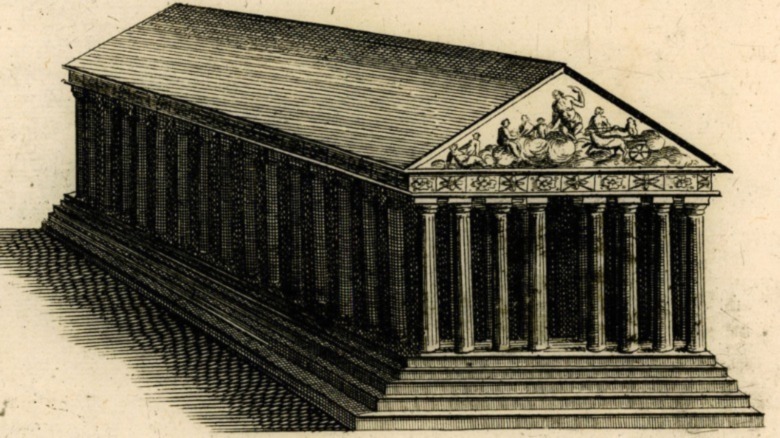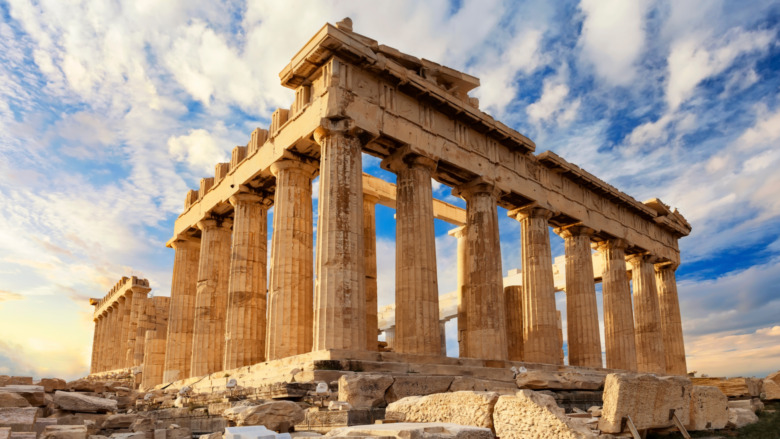The 1687 Explosion That Destroyed The Parthenon
It's easy to imagine famous landmarks as always having been the way they are now, but in reality, the only constant in the world is change. The iconic "HOLLYWOOD" sign? It actually said "HOLLYWOODLAND" until it was rebuilt in the 1970s. The Liberty Bell? Wasn't cracked until the early 19th century. And the Parthenon? Obviously, the Parthenon wasn't built as ruins. "Of course it's in ruins now," you're thinking. "It's nearly 2,500 years old. How could it not be in ruins?"
The thing about buildings, though, is they can actually last for quite a long time, as long as people are maintaining them, and it turns out there was nothing inevitable about the Parthenon's current status as a crumbling, roofless collection of pillars. Actually, the Parthenon was well-maintained even long after Hellenistic paganism went the way of the dodo, and served as both an ancient church and a medieval mosque. It survived well into the modern era, and likely would be standing still, if it weren't for some very careless Turks and some very trigger-happy Venetians.
The origins of the so-called Great Turkish War are long and complex, but the short version is that the Ottoman Empire was clashing with European powers over control of the Aegean Sea.
The Parthenon was just fine until the Ottoman Turks started stuffing it full of explosives
This led them to stage several attacks on European states in 1683, resulting in a war between the Ottoman Empire on one side and an alliance of the Venetian Republic, the Polish-Lithuanian Commonwealth, and the Holy Roman Empire on the other (via Artillery History).
By 1687, the Venetian armies, led by Captain-General Francesco Morosini, had made significant headway into the then-Ottoman-controlled Greek peninsula, marching his armies northward from Peloponnese to Athens. The Ottomans, doing what they had to do, retreated and fortified at the city's Acropolis, and then, for reasons we might never understand, began storing their gunpowder and munitions in said Acropolis's most prominent, therefore most shootable, feature: the Parthenon.
It's not clear exactly what the Ottomans were thinking. Maybe they were under the impression that the Venetians wouldn't dare fire on a building of such historical import. If that was the case, they were severely mistaken. Morosini began shelling the Acropolis on September 23, 1687; on the 26th, what he later called a "fortunate shot" managed to pierce through the Parthenon's marble roof, and the entire thing blew sky-high. The city of Athens burned for two days straight, and the Turks were sent packing (via Gizmodo).
Athens was only under Venetian control for a year or so — in 1688, the Ottomans took it back (via Greek Reporter) — but the Parthenon was (obviously) never the same.

